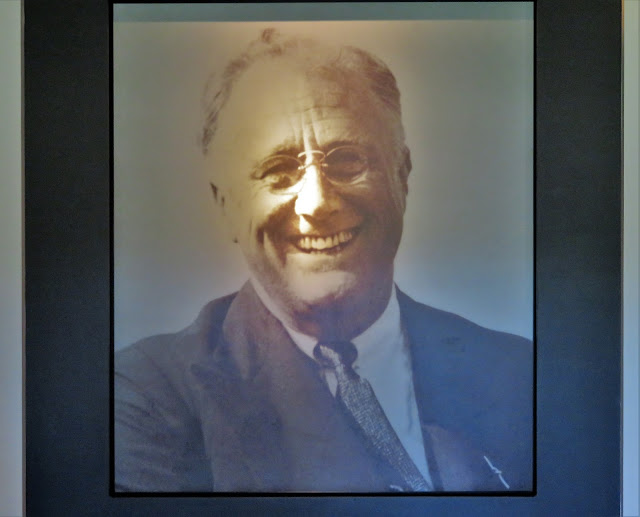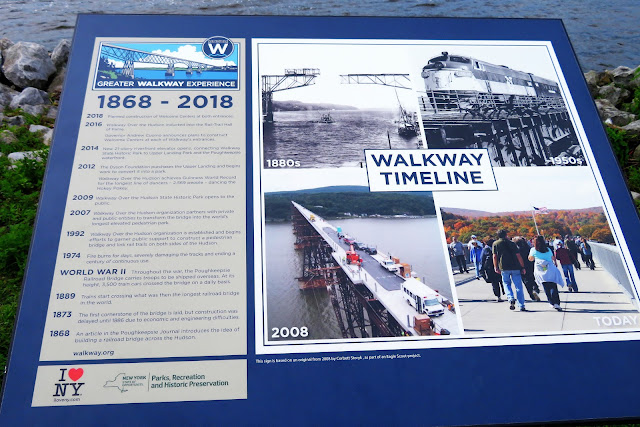In late August 2018 we spent a couple of days
touring the Franklin D. Roosevelt Presidential Library, the FDR childhood home,
and both Eleanor and Franklin’s personal cottages. All of these structures are located
on the grounds of the Roosevelt family estate of Springwood, in Hyde Park, New
York.
Our first stop was to the presidential library.
This is the first of the thirteen presidential libraries under the auspices of the
National Archives and Records Administration and was built under the President’s
personal direction in 1939-1940. Prior
to Roosevelt's Presidency, the final disposition of Presidential papers was
left to chance. Although a valued part of the nation's heritage, the papers of
chief executives were private property which they took with them upon leaving
office. Some were sold or destroyed and thus either scattered or lost to the
nation forever. Others remained with families, but inaccessible to scholars for
long periods of time. The fortunate collections found their way into the Library of Congress and private repositories. Roosevelt
was the first to make his papers available to the public by donating them to
the government. In erecting his library, Roosevelt created an institution
to preserve intact all his papers.
There are countless volumes written about FDR,
Eleanor, the years they were in office, their personal lives, the depression,
the war. I personally found Eleanor as interesting and influential, if not more
so, at times, than Franklin. Even though both of them came from immense family
wealth, the importance and well-being of those less fortunate was always a priority
for them. Further exploration for those interested is there at our (internet)
fingertips.
For this post, I will just mention these ten
major accomplishments, along with pictures we took at the presidential library.
- FDR served as governor of
New York from 1929 to 1932.
- He is the longest
serving president in the history of the United States.
- He arrested
financial panic through the Emergency Banking Act.
- The FDIC was
established through the 1933 Banking Act.
- Roosevelt set up
many important institutions as part of his first New Deal, included the
CCC, PWA, TVA and FERA.
- The US Social
Security System was created during his presidency.
- He established a national
minimum wage through the Fair Labor Standards Act.
- He took the first
federal action to prohibit employment discrimination.
- Along with Churchill
and Stalin, FDR led the allied coalition to victory in World War II.
- He Played a major role in the creation of
the United Nations.



















































